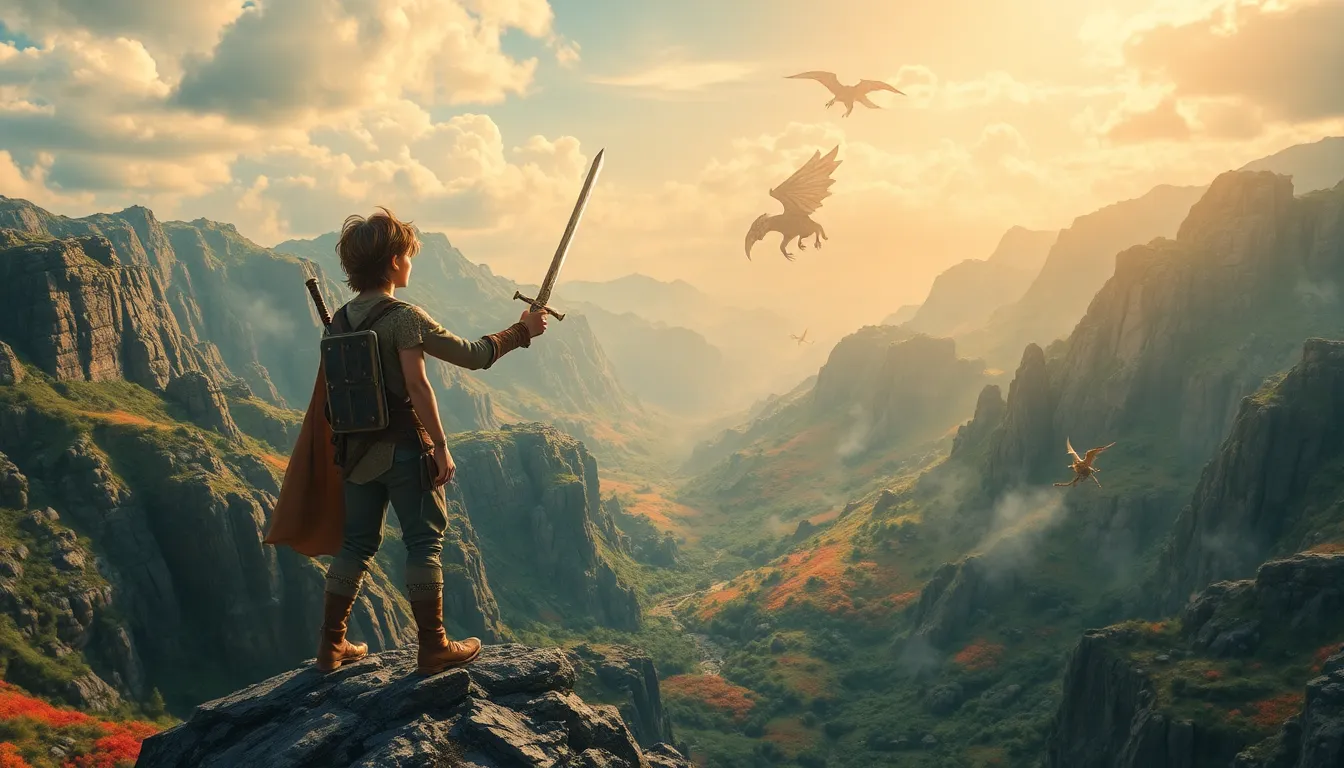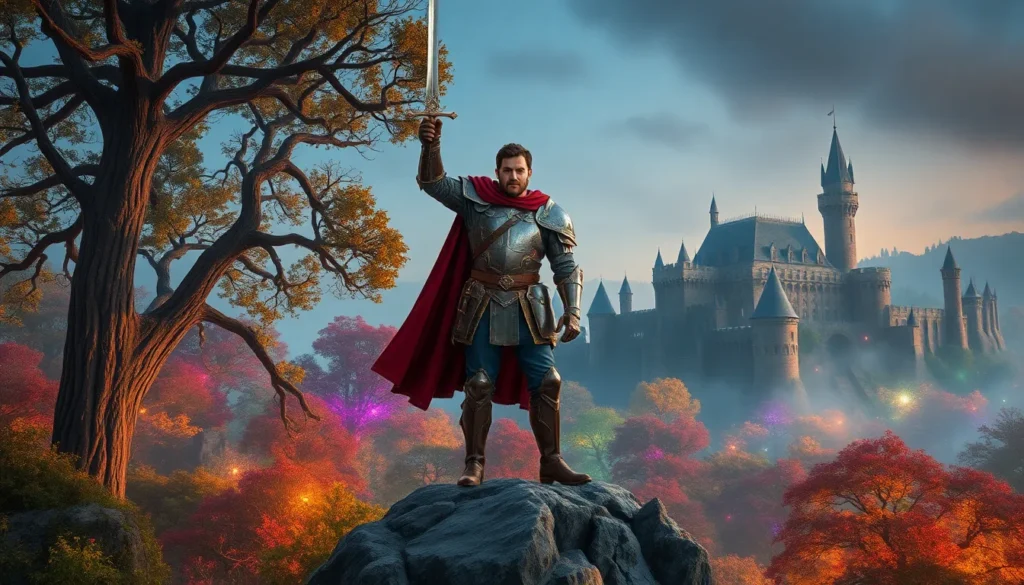Table of Contents
ToggleIn a world where dragons soar and heroes rise, mythical adventure films whisk audiences away on epic journeys filled with magic, mystery, and a dash of mischief. These enchanting tales have a unique charm that captivates the imagination, leaving viewers wondering if they too might stumble upon a hidden realm or a talking animal in their backyard.
Overview of Mythical Adventure Films
Mythical adventure films captivate audiences by weaving together elements of fantasy and exploration. They frequently involve heroes embarking on quests, often in enchanted realms or parallel worlds. These films showcase extraordinary creatures, magical powers, and legendary artifacts that enhance their narratives.
A common theme is the battle between good and evil, where protagonists confront formidable adversaries. These cinematic journeys often highlight character growth, emphasizing bravery, loyalty, and friendship. Films such as “The Lord of the Rings” and “Pan’s Labyrinth” exemplify the genre, illustrating the impact of mythical storytelling on character development.
The visual spectacle tremendously contributes to the allure of mythical adventures. Stunning special effects, imaginative set designs, and intricate costumes transport viewers to fantastical settings. Directors, like Peter Jackson and Guillermo del Toro, masterfully utilize technology to create immersive experiences.
Music plays a significant role, with scores that evoke emotions and heighten drama. Iconic soundtracks often enhance key moments, making them unforgettable. Collaborations with renowned composers, such as Howard Shore and Alan Silvestri, elevate the cinematic experience.
The themes in mythical adventure films resonate with audiences of all ages. They encourage imagination and exploration, inviting individuals to believe in the extraordinary. Such narratives often inspire adaptations in various formats, including literature and video games, reflecting their widespread appeal.
Overall, mythical adventure films blend creativity with storytelling, drawing in viewers eager for fantastical escapades. Engaging plots, rich visuals, and compelling music create a lasting impact, establishing this genre as a beloved staple in cinema.
Key Elements of Mythical Adventure Films

Mythical adventure films captivate audiences through their enchanting tales, bringing to life vivid worlds filled with magic and adventure.
Common Themes
Mythical adventure films often incorporate timeless themes that resonate deeply with viewers. The struggle between good and evil typically drives the plot, highlighting moral dilemmas faced by heroes. Quest narratives emerge, as protagonists embark on journeys to discover their true selves and fulfill their destinies. Many stories include elements of friendship, where alliances form among diverse characters, fostering growth. Betrayal might appear, forcing heroes to confront treachery from trusted allies. Each theme intertwines seamlessly, creating emotional depth in the narrative.
Iconic Characters
Iconic characters define mythical adventure films, giving audiences memorable figures to root for or against. Protagonists frequently embody heroic traits such as courage and resilience. These characters often come from humble beginnings, enhancing relatability. Antagonists may include powerful dark forces or cunning adversaries, challenging the heroes’ strengths. Sidekicks also play crucial roles, providing comic relief or sage advice, amplifying the story’s emotion. Unique creatures like dragons and fairies further enrich the character landscape, adding layers of magic and intrigue throughout the films.
Notable Mythical Adventure Films
Mythical adventure films capture the imagination through timeless tales and unforgettable characters. These films range from classics to modern adaptations, each contributing to the genre’s rich tapestry.
Classic Examples
Classic mythical adventure films include iconic titles like “The Wizard of Oz” and “The Chronicles of Narnia.” “The Wizard of Oz,” released in 1939, introduced audiences to the enchanting Land of Oz and characters like Dorothy and the Scarecrow. “The Chronicles of Narnia,” beginning with “The Lion, the Witch and the Wardrobe” in 2005, transports viewers to the magical land of Narnia, where children become heroes. Both films showcase the battle between good and evil while highlighting friendship and bravery. These classic narratives resonate across generations, establishing a foundation for the genre.
Modern Adaptations
Modern adaptations continue to reinvent mythical adventure films. “Harry Potter” series, starting with “Harry Potter and the Sorcerer’s Stone” in 2001, blends magic with coming-of-age themes. This narrative follows a young wizard as he navigates friendship, loyalty, and the fight against dark forces. “The Shape of Water,” directed by Guillermo del Toro in 2017, offers a unique perspective on mythical narratives through its love story between a mute woman and a water creature. These adaptations reflect current storytelling trends while retaining the essence of mythical adventures, captivating both new and long-time fans.
Cultural Impact of Mythical Adventure Films
Mythical adventure films significantly influence global culture and storytelling. Their themes resonate across generations, fostering a collective imagination. Audiences often engage with tales that explore morality, heroism, and the confrontation of evil.
These narratives inspire artistic expressions beyond cinema. Literature, video games, and theater productions reflect the adaptations of mythical themes. Key characters and plots frequently appear in various forms, showcasing their enduring popularity.
Merchandising plays a vital role in enhancing cultural impact. Toys, clothing, and collectibles derived from beloved films generate substantial revenue and promote fandom. Iconic artifacts, like wands from the “Harry Potter” series, become symbols of identity for fans.
Additionally, critical discussions arise surrounding the representation of myths. A diverse range of stories encourages inclusivity and challenges stereotypes. This shift brings attention to different cultures and histories, enriching the overall narrative landscape.
Community events, such as conventions and screenings, further amplify the cultural impact. Fans gather to celebrate their favorite films, participate in discussions, and dress as their favorite characters. Such activities strengthen bonds among enthusiasts, fostering a sense of belonging.
Influential filmmakers contribute to this cultural phenomenon, utilizing modern technology and innovative techniques. Directors like Peter Jackson and Guillermo del Toro challenge traditional storytelling, enhancing visual experiences. Their approach confirms the impact of mythical adventure films on contemporary genres.
Ultimately, the cultural significance of mythical adventure films proves substantial. They inspire creativity, encourage exploration, and strengthen connections among diverse audiences. Such narratives leave an indelible mark on society, reflecting the universal desire for adventure and wonder.
Mythical adventure films continue to captivate audiences with their enchanting narratives and rich visual experiences. These stories not only entertain but also resonate on a deeper level, exploring timeless themes of bravery, friendship, and the battle between good and evil.
As filmmakers push the boundaries of creativity and technology, they breathe new life into age-old myths while fostering a sense of community among fans. The genre’s ability to inspire and unite people across cultures speaks to its enduring appeal.
With each new release, mythical adventure films promise to ignite the imagination and encourage viewers to embark on their own journeys of discovery and wonder.



